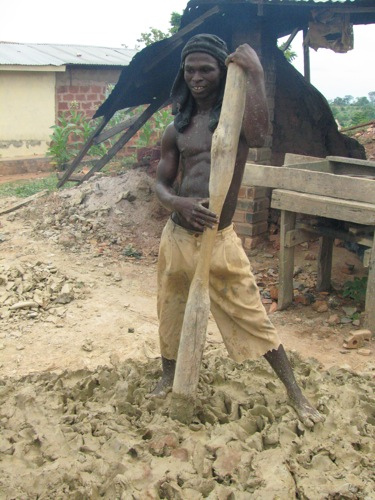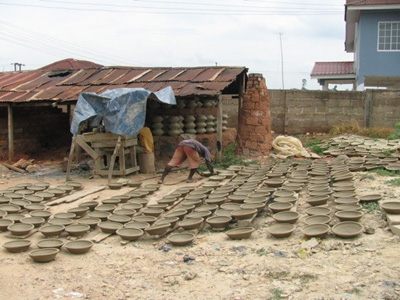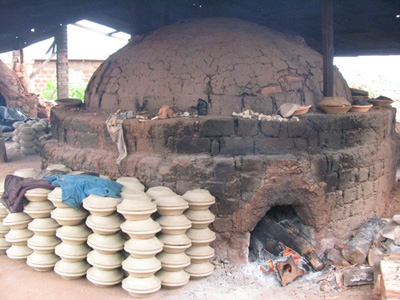Clay
Part five of the Ghanaian Handicraft series.
As in many cultures, pottery is made from clay in Ghana. Yet as a craft it is hard to find here, largely because it is considered utilitarian, with a market that’s almost completely domestic. People use the pots, bowls, and vessels in everyday life.

Unlike other handicraft that is created at some distance from the source of the raw materials, potting happens close to the river banks that provide the clay, presumably because it’s a pain to move large quantities of the dense, wet material.
We visited the tiny village of Nfensi and were taken to their river. It was one of those glad-I-took-my-malaria-meds moments. (Luckily we were there during the daytime, before the virus-toting Anopheles skeeters come out.)

Once hauled up from the water the clay is pounded repeatedly to loosen it up. (The pounder uses the same tool that smashes open yam and cassava for fufu, incidentally.) There’s a further step of kneeding, then the potter slices off as much clay as he’ll need and slaps it on the wheel.
The potter’s wheel is completely manual. One guy cranks it while the master shapes the clay.

It happens so quickly and effortlessly — probably not surprising given that they turn out approximately 1,000 items every three days.

Once dried, the clay objects are prepared for the igloo-shaped kiln. It’s infernally hot around the oven which the artisans actually walk into to stack the clay pots. Then the “door” to the oven is bricked up and the fire is allowed to go for a few days. The door gets broken back down and out come the finished, though unadorned pieces.
There is an export market that consumes larger, more finely decorated pieces, but it is overshadowed by the more “traditional” wooden export market. To many Westerners, Africa means wood carvings (masks, statues, etc). But those consumers who are interested in owning the most “real” African goods — what one study calls “authenticity buyers” — might look to pottery as an alternative.
More clay pottery video here.













